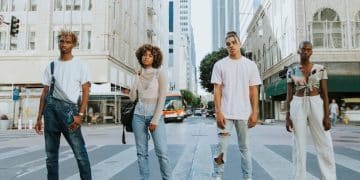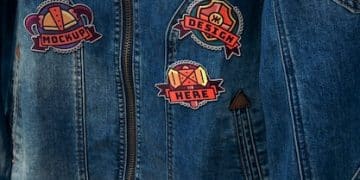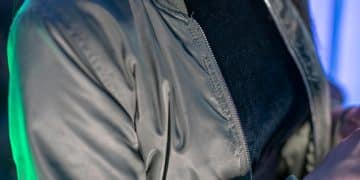Streetwear Fit Guide: Achieve Perfect Silhouette with Proportional Hacks

Achieving the perfect silhouette in streetwear involves mastering proportional hacks, which are essential techniques for balancing garment sizes, understanding body types, and strategically layering to enhance overall aesthetic flow and personal style.
Dressing well in the ever-evolving world of streetwear isn’t just about owning the latest hyped pieces; it’s fundamentally about how those pieces come together on your body. The essence lies in understanding proportions, a crucial element for anyone aiming to nail their look. Our comprehensive Streetwear Fit Guide: Achieve the Perfect Silhouette with These Proportional Hacks delves into the art and science of balancing your attire, ensuring that every outfit resonates with intention and style.
Understanding the Foundation: Body Types and Basic Proportions
To begin constructing an ideal streetwear silhouette, a fundamental understanding of your own body type is paramount. This isn’t about fitting into a predetermined mold, but rather about learning how to intelligently manipulate clothing to complement your natural frame. Streetwear, with its inherently relaxed and often oversized nature, offers immense flexibility, yet it still benefits from a considered approach to fit.
Each body type—whether it’s athletic, lean, or broad—presents unique opportunities for proportional play. The goal is often to create a balanced look, where no single element overwhelms the others. For example, if you have a more athletic build, oversized tops might be balanced with slimmer bottoms, or vice versa, to avoid a bulky appearance.
Recognizing Your Frame
Identifying your specific body type helps in making informed decisions about garment choices. It influences everything from jacket length to pant width. For instance, individuals with shorter torsos might opt for slightly cropped jackets to lengthen their legs visually, while those with longer torsos could benefit from longer shirts or oversized hoodies. This discernment forms the cornerstone of effective proportional dressing.
- Shoulder Width: Often dictates the fit of jackets and hoodies.
- Torso Length: Affects how tops fall and where pants sit.
- Leg Length: Crucial for determining ideal pant and short lengths.
- Overall Build: From slim to muscular, this impacts fabric drape and volume.
The concept of “basic proportions” extends beyond just body type to how individual garments interact. It’s about how much skin is shown, how much volume each piece contributes, and how the eye travels across the entire ensemble. A well-proportioned outfit feels harmonious, even if it incorporates contrasting elements, because the underlying balance is sound. It’s an artful blend of foresight and visual flow.
Mastering Oversized Silhouettes: Balancing Volume with Structure
Oversized clothing is a cornerstone of contemporary streetwear, but pulling it off successfully requires more than simply sizing up. It demands a sophisticated understanding of how volume interacts with the body and how to introduce elements of structure to prevent the look from appearing sloppy. The key lies in strategic pairing and thoughtful fabric choices, transforming an otherwise baggy outfit into a statement of intentional style.
When selecting oversized pieces, consider the intent. Is it a dramatically dropped shoulder, an extended hemline, or generous width? Each characteristic contributes to a different aesthetic impact. Pairing an oversized hoodie with slim-fit jeans, for example, creates a classic streetwear silhouette that emphasizes the top’s volume while maintaining a clean line through the legs. This contrast is pivotal to achieving balance.
Strategic Fabric Choices
The type of fabric significantly influences how an oversized garment drapes. Stiffer, more structured fabrics like heavy cotton or denim hold their shape, adding a sense of intentionality to the volume. In contrast, softer, lighter fabrics like jersey or viscose will flow more, creating a more relaxed and fluid silhouette. Understanding these nuances allows for greater control over the final look, ensuring that oversized pieces enhance, rather than detract from, the overall aesthetic.
- Heavy Cotton: Provides structured volume for hoodies and t-shirts.
- Rigid Denim: Ideal for oversized jackets that need to hold their shape.
- Technical Fabrics: Offers unique drapes and retains sharp lines.
Furthermore, integrating structured elements, such as a well-defined collar or a sturdy pair of shoes, can anchor an oversized outfit. A crisp baseball cap or a statement belt can also serve to “ground” a voluminous look, providing points of visual interest and preventing the entire ensemble from appearing amorphous. This meticulous attention to detail is what elevates a casual oversized outfit to a masterclass in proportional styling, embodying effortless cool without compromise.
The Art of Layering: Adding Depth Without Bulk
Layering is a quintessential element of streetwear, offering infinite possibilities for expressing personal style, adapting to varying temperatures, and most importantly, building visual depth. However, the true artistry of layering lies in adding this complexity without creating excessive bulk or distorting the desired silhouette. It’s about smart choices in garment thickness, length, and texture, ensuring each layer complements, rather than competes with, the others.
Effective layering begins with the thinnest garment closest to the body, progressively adding thicker pieces. For instance, a lightweight t-shirt serves as the base, followed by an open flannel shirt, and then an unzipped bomber jacket. This gradual increase in volume maintains a streamlined profile. Contrast in length is also crucial; a longer base layer peaking out from beneath a shorter top layer adds dynamic visual interest and extends the body’s lines.
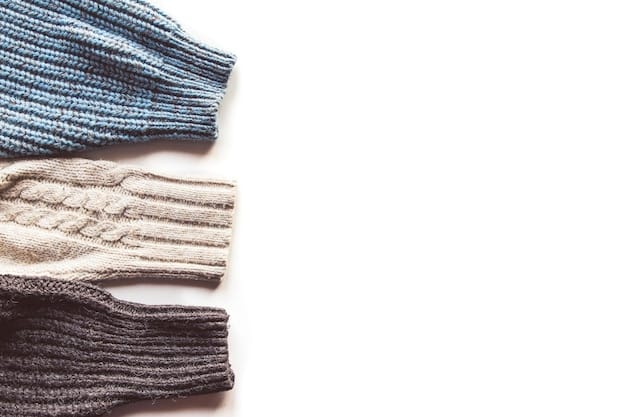
Texture and Color Play
Beyond manipulating volume, successful layering leverages variations in texture and color to create a richer, more engaging outfit. Combining rough denim with smooth nylon or soft fleece introduces tactile diversity. Similarly, playing with shades of a single color, or strategically introducing a contrasting color in one of the layers, can draw the eye and define different sections of the silhouette. These subtle details contribute immensely to the overall appeal of a layered look.
The outermost layer, whether it’s a parka, a utility vest, or a bomber jacket, often dictates the overall silhouette of the top half. Therefore, selecting one that harmonizes with the inner layers, both in fit and style, is paramount. Avoiding excessive bunching or awkward overlaps ensures that the layered look appears cohesive and intentional, rather than haphazard. This mindful approach to garment selection and arrangement is key to mastering the depth of streetwear layering.
Optimizing Bottoms: From Relaxed Fits to Tapered Silhouettes
The choice of bottoms in streetwear plays an instrumental role in defining the overall proportional balance of an outfit. Whether opting for the relaxed ease of baggy cargos or the sharp lines of a tapered jogger, the decision significantly impacts the silhouette. Understanding how various cuts and styles of pants interact with different top halves is crucial for achieving a cohesive and aesthetically pleasing look that feels both authentic and refined.
Relaxed-fit pants, such as wide-leg trousers or loose-fit jeans, offer comfort and a laid-back aesthetic. When paired with a more fitted or slightly cropped top, they create a balanced silhouette that emphasizes the legroom while maintaining definition in the upper body. This contrast prevents the entire outfit from appearing overwhelmingly voluminous. Conversely, if combining relaxed bottoms with an oversized top, thoughtful layering or a defined waistline becomes essential to avoid losing the body’s natural shape.
Achieving the Perfect Break
The “break” of a pant—how the fabric creases as it meets the shoe—is a subtle but significant proportional detail. For a clean, modern streetwear look, a minimal or no-break approach is often preferred, allowing the pant to sit cleanly atop the sneaker. This can be achieved through precise hemming or by choosing pants designed with a tapered leg that naturally falls without excessive bunching. This attention to detail extends the leg line and provides a sleek finish.
- No Break: Ideal for a clean, contemporary look with tapered pants.
- Slight Break: A subtle fold perfect for wider or straight-leg trousers.
- Stacked: intentional bunching at the ankle, common with slim or comfort-fit jeans.
Tapered pants, including cargo pants with adjustable cuffs or tailored joggers, offer a versatile alternative. Their design narrows towards the ankle, creating a cleaner line that pairs effectively with both oversized and standard-fit tops. This cut provides a contemporary silhouette that highlights footwear, a critical component of streetwear. Ultimately, optimizing bottoms is about finding the sweet spot where comfort meets intentional design, ensuring every outfit feels thoughtfully constructed from top to bottom.
Footwear and Accessories: The Finishing Proportional Touches
While garments form the large canvases of a streetwear outfit, footwear and carefully chosen accessories are the crucial brushstrokes that complete the masterpiece. These elements are not mere afterthoughts; they are integral to manipulating proportions, adding visual anchors, and injecting a dose of personal flair. The right shoes or a well-placed accessory can dramatically alter the perception of an entire silhouette, pulling together disparate elements into a cohesive whole.
Sneakers, the undisputed kings of streetwear footwear, come in an astonishing array of shapes, sizes, and profiles. A chunky, oversized sneaker can balance a voluminous top or add a substantial base to narrower pants. Conversely, a sleeker, low-profile sneaker might be chosen to extend the leg line when paired with tapered trousers. The interplay between the shoe’s volume and the pant’s opening is a pivotal proportional consideration, influencing the perceived length and width of the leg.
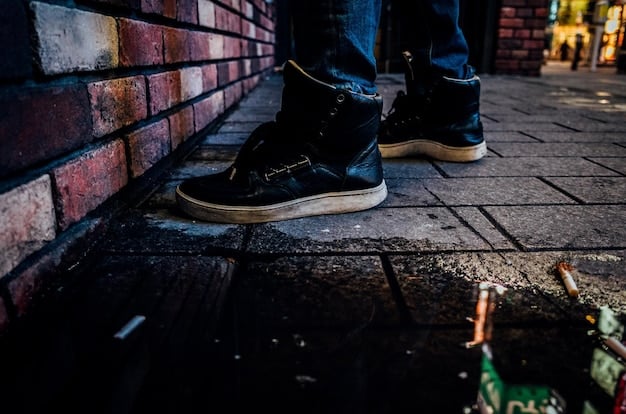
The Power of Headwear and Bags
Accessories like beanies, baseball caps, and bucket hats can draw attention upwards, subtly shifting the proportional focus of an outfit. A beanie, for instance, can visually shorten a longer face or add a relaxed touch to a more structured ensemble. Similarly, bags—from cross-body utility bags to larger totes—can act as functional accessories that also contribute to the silhouette. A crossbody bag creates a diagonal line across the torso, breaking up larger sections of fabric and adding dynamic shape.
Belts, though seemingly minor, are powerful proportional tools. A visible belt can define the waist, especially when layering oversized pieces, helping to maintain body shape beneath layers. Jewelry, while smaller in scale, can add metallic accents that catch the light and draw the eye, preventing an outfit from appearing flat. Every accessory, no matter how small, offers an opportunity to refine the overall proportional message of your streetwear fit, proving that the details truly make the difference.
Practical Hacks: Elevating Your Streetwear Ensemble
Moving beyond theoretical concepts, there are practical hacks that immediately elevate your streetwear game by strategically adjusting proportions. These aren’t just styling tips; they are actionable techniques designed to refine your silhouette, ensuring every outfit looks intentionally curated rather than haphazardly thrown together. From simple tucks to thoughtful hem adjustments, these methods offer immediate visual impact and enhance your overall aesthetic.
One of the simplest yet most effective hacks involves the “half-tuck” or “French tuck” for tops. This technique involves tucking only the front portion of a t-shirt or shirt into your pants, leaving the sides and back loose. This creates a more defined waistline without sacrificing the relaxed vibe inherent in streetwear. It’s particularly effective with oversized tops, preventing them from appearing shapeless and adding a subtle structure that draws attention to the pant-waist interaction.
Strategic Hemming and Cuffing
The length of your pants and sleeves significantly impacts overall proportionality. For pants, a clean hem that just skims the top of your shoes (minimal break) or a slight cuff (if the pant is a bit longer) can drastically improve the silhouette. Cuffing not only adjusts length but can also introduce a visual break or highlight unique footwear. For sleeves, pushing them up, or rolling them, particularly on jackets or long-sleeve shirts, creates a more energetic and fitted appearance, preventing them from looking excessively baggy.
- The “Gather”: Strategic bunching of fabric in areas like the ankle for a stacked effect.
- The “Crop”: Hemming tops or jackets slightly shorter to elongate the legs.
- The “Cinch”: Using drawstrings or adjustable cuffs to tailor the fit of a garment.
Furthermore, consider the use of adjustable features on garments, such as drawstrings on hoodies or toggles on cargo pants. These allow for on-the-fly adjustments that can dramatically alter the garment’s silhouette, cinching waistlines or tapering leg openings. Even small adjustments to backpack strap length or how a beanie sits on your head can subtly impact your perceived proportions. Embracing these practical hacks transforms your approach from merely wearing clothes to actively sculpting your look, ensuring that every streetwear ensemble achieves maximum style and proportional harmony.
The Importance of Fit Over Brand in Streetwear
In the vibrant, brand-driven landscape of streetwear, it’s easy to get caught up in the hype surrounding logos and limited-edition drops. However, a crucial tenet that often gets overlooked, yet holds immense power, is the supremacy of fit over brand. While owning an exclusive piece can be exciting, if it doesn’t fit correctly or complement your proportions, its impact is significantly diminished. True style in streetwear isn’t about what label you wear, but how well you wear it, and that hinges on the perfect fit.
A well-fitted garment, regardless of its designer, inherently looks more intentional and sophisticated. It speaks to a wearer who understands their body and how clothes should drape, rather than someone simply following trends. An oversized hoodie from a fast-fashion retailer, if its proportions are thoughtfully balanced with other elements of your outfit, can look more stylish than a poorly fitting designer piece. This reality underscores the importance of an educated eye and a focus on personal calibration.
Cultivating a Personal Aesthetic
Prioritizing fit enables the development of a unique personal aesthetic that transcends fleeting trends. When you understand how to manipulate sizing, layering, and silhouettes to flatter your body, you gain the confidence to experiment and create looks that are authentically “you.” This self-awareness liberates you from the compulsion to chase every new release, allowing for a more sustainable and fulfilling approach to personal style. It’s about building a wardrobe that works for you, rather than conforming to external pressures.
Investing in pieces that complement your individual proportions, even if they aren’t the most “hyped” items, is a smarter long-term strategy. These foundational pieces, chosen for their superior fit and versatility, become the building blocks upon which dynamic and stylish streetwear outfits are built. Ultimately, putting fit first ensures that your personal style remains paramount, allowing you to navigate the streetwear scene with genuine confidence and an unimpeachable sense of self-expression.
| Key Principle | Brief Description |
|---|---|
| 📏 Body Awareness | Understanding your frame is crucial for selecting clothes that naturally enhance your silhouette. |
| ⚖️ Volume Balance | Pairing oversized pieces with contrasting slimmer fits creates harmonious and intentional looks. |
| 🧅 Strategic Layering | Adding depth with multiple garments without sacrificing a clean, defined silhouette. |
| 👟 Foundational Footwear | Shoes and accessories significantly influence the perceived balance and flow of an outfit. |
Frequently Asked Questions
▼
Understanding your body type is foundational for streetwear. It allows you to select garments that complement your natural frame, whether emphasizing certain features or balancing proportions. This knowledge helps in choosing fits and styles that enhance your overall look, ensuring comfort and confidence in your aesthetic.
▼
While challenging, wearing oversized tops with oversized bottoms is possible. The key is to incorporate structural elements or define your waist through half-tucks or belts. Pay attention to fabric drape and texture contrast to avoid a shapeless look. Strategic layering can also help create depth and intentionality within the voluminous silhouette.
▼
For beginners, start with the half-tuck to define your waist. Experiment with cuffing pants to achieve a clean break or highlight footwear. Pay attention to how your outerwear drapes and try playing with different shoe profiles to see how they impact your leg line. These simple adjustments can significantly elevate your fit.
▼
Accessories play a crucial role by adding visual anchors and influencing perceived proportions. Chunky sneakers can balance oversized clothing. Headwear draws attention upwards. Crossbody bags create diagonal lines, breaking up large fabric expanses. Belts define the waist. These elements provide crucial finishing touches that pull an outfit together proportionally.
▼
While brands are prominent in streetwear, focusing on fit is ultimately more important. A well-fitted garment, regardless of its label, looks more intentional and polished. Prioritizing fit allows you to develop a unique personal aesthetic that transcends trends, ensuring your style is authentic and reflects a true understanding of fashion.
Conclusion
Mastering the perfect streetwear silhouette is an intricate dance of understanding your body, manipulating garment proportions, and leveraging strategic styling techniques. It moves beyond merely collecting trendy pieces to curating an aesthetic that is both harmonious and deeply personal. By consciously applying proportional hacks, from balancing oversized volumes with structured elements to artfully layering and selecting the right accessories, you transform your wardrobe into a canvas for elevated self-expression. Embrace these insights, and you’ll achieve a streetwear presence that is not only stylish but also uniquely yours.
